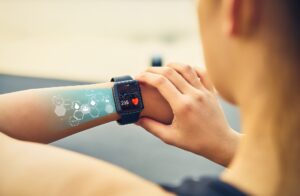In recent years, wearable health devices have gained significant popularity for monitoring and managing personal health. These gadgets offer a range of potential benefits that can transform healthcare, but many doctors remain cautious about their widespread adoption. Here’s a closer look at the advantages and the reservations healthcare professionals have regarding wearables.
Benefits of Wearable Health Devices
- Continuous Monitoring
Wearables track vital signs, activity levels, sleep patterns, and other health metrics in real-time. This constant data collection enables early detection of potential health issues, supports proactive health management, and allows for personalized care plans tailored to individual needs.
- Chronic Disease Management
Devices such as continuous glucose monitors and ECG trackers empower individuals managing chronic conditions. They provide ongoing data that helps patients make informed decisions about their treatment and lifestyle, aligning with insights from the National Institutes of Health (NIH).
- Increased Patient Engagement
By offering accessible health data and personalized insights, wearables encourage users to take a more active role in their health, fostering greater engagement and adherence to health routines.
- Better Data for Healthcare Providers
Wearables can give healthcare professionals a comprehensive view of a patient’s health beyond the limited window of a typical appointment. This holistic data supports more accurate diagnoses and data-driven decision-making.
- Potential Cost Savings
Supporting preventive care and remote monitoring, wearables can reduce the need for costly hospital stays and emergency visits, potentially lowering overall healthcare expenses.
Why Some Doctors Are Hesitant
- Data Accuracy and Reliability
While technological improvements are ongoing, concerns about the precision of data collected by wearables persist. Many doctors view these devices as complementary tools rather than primary diagnostic instruments, emphasizing the need for caution in interpreting their data (Cognitec).
- Privacy and Security Issues
Wearables collect sensitive health information, raising fears about data breaches, unauthorized access, and how data might be shared with third parties. Since many consumer-grade devices may not fully comply with HIPAA regulations, privacy concerns remain significant (IAPP).
- Lack of Standardization and Interoperability
Integrating data from various wearable devices into existing electronic health record systems is challenging. The lack of standardized data formats and interoperability can hinder seamless information sharing.
- Information Overload and Time Constraints
The vast amount of data generated can be overwhelming for both patients and healthcare providers. Sorting through this information to identify critical issues can be time-consuming and may lead to information fatigue.
- Accessibility and the Digital Divide
High device costs and varying levels of technical literacy can limit access for some populations, potentially widening healthcare disparities and limiting the benefits of wearable technology.
- Over-reliance on Technology
Some healthcare professionals worry that excessive dependence on wearables might diminish the value of traditional medical practices, such as in-person consultations and physical examinations.
- Insufficient Regulatory Framework
Compared to regulated medical devices, many wearables lack a robust regulatory framework, raising concerns about safety, data handling, and efficacy (American Medical Association).
Conclusion
Wearable health devices have the potential to revolutionize healthcare by making monitoring more continuous, personalized, and accessible. However, addressing concerns related to data accuracy, privacy, interoperability, and over-reliance is essential for gaining the trust of healthcare professionals. As technology advances and regulatory frameworks evolve, collaboration between innovators, clinicians, and policymakers will be key to harnessing the full benefits of wearable health devices for everyone.

